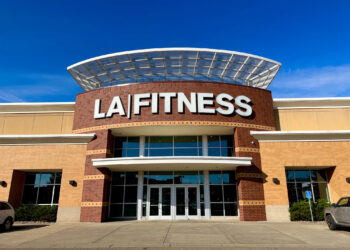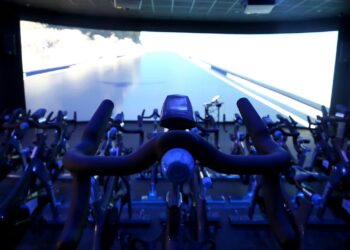However, dealing with all of the equipment buying decisions can be a daunting task. How much cardio equipment do you need? How much strength? How should equipment be laid out? Should you lease equipment or buy it outright? Should you work with one vendor or multiple vendors?
To help, Matt Schultz, the vice president of franchise operations at Retro Fitness, answered a few of our equipment purchasing questions.
CS: What is the equipment selection process like for Retro Fitness franchisees?
MS: The architect plans out the location — the inside of the actual facility, what the flow is and all of that stuff. Then we get the plans from the architect, send it to our main equipment company and they lay out a typical Retro Fitness floor plan. From there the floor plan is reviewed with the franchisee. We go over the pros and cons of flow, if they want particular pieces of equipment, etc. We agree on a floor plan and then the process moves forward toward financing or buying the equipment.
CS: Do you encourage franchisees to buy or lease equipment?
MS: We encourage them to do what they feel comfortable with. Of course the big difference between buying and leasing is the debt service on the business itself. So they could pay outright, which is always a great thing because they won’t put the debt service on and they won’t pay more in the long run interest rate wise than they would when they do a lease. Most of our franchisees lease or purchase through conventional loans.
CS: What is one of the biggest challenges you come across during the equipment buying process?
MS: I guess the challenge is really settling on a floor plan. You have to order your equipment a certain time in advance to make sure you have it for opening and to have that process done in the right amount of time. Our vendors help us with that by keeping plenty of equipment in stock so we don’t get to the point where we don’t have equipment ready for someone who needs equipment delivered on a certain date because they waited too long to order it. Our vendors are pretty good about keeping inventory in stock. But that would be our biggest hurdle is finalizing floor plans, making sure electric is correct — especially for treadmills.
CS: How important is the layout of the gym?
MS: It is extremely important. When it comes to flow for a gym, you can walk in and have free weights right in front but you don’t want the flow to be cluttered so that people can’t get to the locker rooms easily or the ancillary services like personal training or the juice bar properly. We have ancillary services inside each of our gyms that assist our franchisees in making money, so we want to make sure that the flow coming in and out of the gym works properly and it is easy for people to use the ancillary services, locker rooms and class rooms.
CS: What other advice would you give gym operators about selecting equipment?
MS: We are not building a gym for ourselves, we are building a gym for our customers and that is the best advice I can give. If a franchisee or owner out there wants to build a gym for themselves they need to do that at home — their gym is for the customers.
Stay ahead in the fitness industry with exclusive updates!
Emily Harbourne is the former assistant editor of Club Solutions Magazine.










